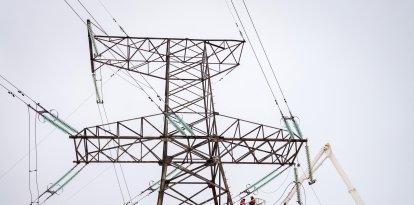Trump's Alcatraz: An American CECOT?
The president has ordered the reopening of Alcatraz prison with the aim of incarcerating the most dangerous criminals, referring to them as "the dregs of society."

Aerial image of Alcatraz prison
Just over a nautical mile from the San Francisco coast lies Alcatraz Island — a rugged nine-hectare outcrop in the bay that once housed one of the world’s most notorious prisons. After more than sixty years without inmates, the iconic penitentiary is set to return to its original purpose: housing the most dangerous criminals.
In an official announcement, Donald Trump ordered the reopening of Alcatraz Prison, though he did not specify an exact date. Before it reopens, the president stated that the facility will undergo modifications and upgrades to ensure it can house what he called “the dregs of society”—a reference to violent criminals—and to bolster national and public security.
"For too long, America has been plagued by vicious, violent, and repeat Criminal Offenders, the dregs of society, who will never contribute anything other than Misery and Suffering. When we were a more serious Nation, in times past, we did not hesitate to lock up the most dangerous criminals, and keep them far away from anyone they could harm. That’s the way it’s supposed to be," Trump said.

Trump on reopening Alcatraz
"No longer will we tolerate these Serial Offenders who spread filth, bloodshed, and mayhem on our streets. That is why, today, I am directing the Bureau of Prisons, together with the Department of Justice, FBI, and Homeland Security, to reopen a substantially enlarged and rebuilt ALCATRAZ, to house America’s most ruthless and violent offenders (...) The reopening of ALCATRAZ will serve as a symbol of Law, Order and JUSTICE," the president added.
Alcatraz: The CECOT of the U.S.?
Trump made it clear that he intends to restore Alcatraz as a model of high-security incarceration, transforming it into a flagship facility for housing the nation’s most dangerous criminals—echoing similar prisons in other countries.
One model Trump appears to be following is El Salvador’s Center for the Confinement of Terrorism (CECOT), a sprawling high-security prison inaugurated by President Nayib Bukele in February 2023. Designed to hold up to 40,000 inmates, CECOT was built to contain gang members from groups like MS-13 and Barrio 18, and has become an international symbol of hardline crime policy.
Trump has repeatedly praised President Bukele for his tough stance on crime, especially the creation of CECOT. That admiration has translated into action: since returning to the White House, Trump has authorized the deportation of numerous gang members to El Salvador. Further underscoring his support, his Secretary of Homeland Security, Kristi Noem, recently visited CECOT to observe firsthand the facility’s operations and its approach to handling high-risk inmates.
The history of Alcatraz
Commonly known as "The Rock," Alcatraz Prison officially opened in 1912 after two years of construction. It initially functioned as a military penitentiary under the jurisdiction of the U.S. Army.
However, on October 12, 1933, jurisdiction over Alcatraz was transferred to the Department of Justice (DOJ), and by August 1934, it had been converted into a maximum-security facility designed to house some of the most dangerous criminals of that era.
Within its walls, Alcatraz housed some of the most notorious gangsters of the 20th century, including Al Capone, Mickey Cohen, Bumpy Johnson, Alvin Karpis, Arthur "Doc" Barker, Robert Stroud, and George "Machine Gun" Kelly, among others. Although originally built to accommodate 336 inmates, the prison never operated at full capacity, typically holding between 260 and 275 prisoners at any given time.

Alcatraz, in 1950
During its time as a prison, there were 14 documented escape attempts. All those who tried to break out of Alcatraz either died in the process—shot by security forces or drowned in the treacherous waters of the Pacific Ocean—except for Frank Morris and brothers John and Clarence Anglin. The trio attempted a daring escape together, but their fate remains unknown, and their whereabouts have never been discovered.
On March 21, 1963, after nearly three decades as a renowned penitentiary, Alcatraz Prison closed its doors, leaving the island uninhabited. The primary reason for its closure was the exorbitant cost to federal coffers and taxpayers—approximately $10.10 per inmate, compared to the $3 per capita cost of other prisons, according to The Federal Bureau of Prisons.
Six years after its closure, in 1969, a group of Native Americans occupied Alcatraz Island, protesting the government’s treatment of indigenous peoples. Due to the deteriorating condition of the property and the lack of proper infrastructure, they were eventually forced to leave in 1971. In 1972, the island was officially designated as a tourist attraction, and it has been open to visitors ever since.



























